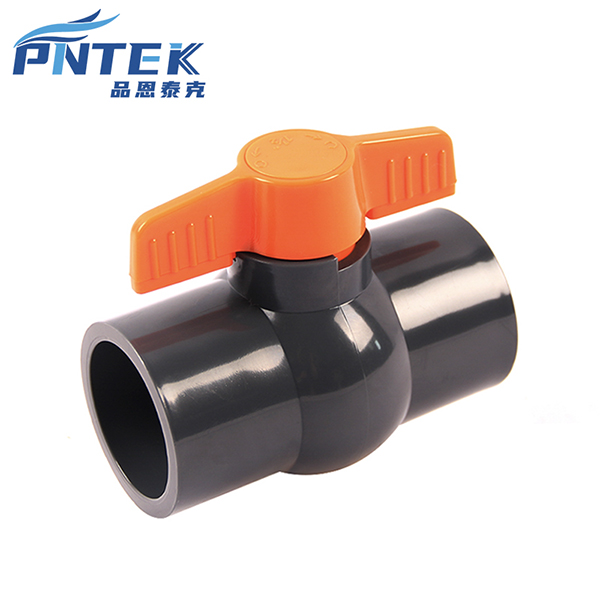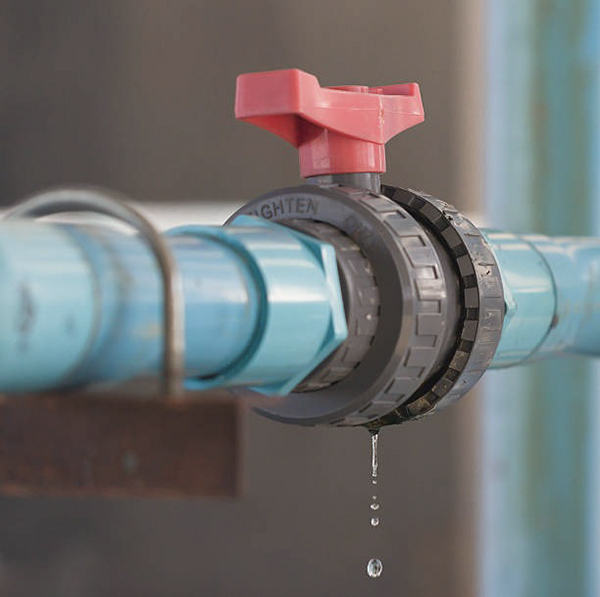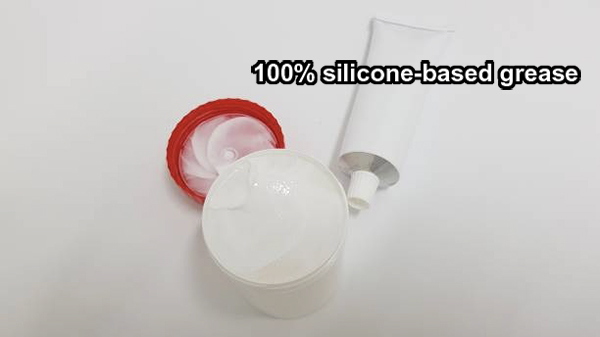You are in a hurry to shut off the water, but the valve handle feels like it is cemented in place. You fear that adding more force will just snap the handle off.
A brand new PVC ball valve is hard to turn because its tight internal seals create a perfect, leak-proof fit. An older valve is usually stiff due to mineral buildup or being left in one position for too long.

This is a question I address with every new partner, including Budi’s team in Indonesia. It’s so common that the answer is part of our standard training. When a customer feels that initial stiffness, their first thought might be that the product is defective. By explaining that this stiffness is a sign of a high-quality, tight seal, we turn a potential complaint into a point of confidence. This small piece of knowledge helps Budi’s customers trust the Pntek products they are installing, strengthening our win-win partnership.
Why are PVC ball valves so hard to turn?
You’ve just unboxed a new valve and the handle resists your turn. You start to question if you bought a low-quality product that will fail you when you need it most.
New PVC ball valves are hard to turn because of the friction between the dry, high-tolerance PTFE seats and the new PVC ball. This initial stiffness confirms a perfect, leak-proof seal will be made.

Let me dive deeper into the manufacturing process, as this explains everything. We design our Pntek valves for one primary purpose: to stop the flow of water completely. To achieve this, we use extremely tight tolerances. The key components are the smooth PVC ball and two rings called PTFE seats. You might know PTFE by its brand name, Teflon. When you turn the handle, the ball rotates against these seats. In a new valve, these surfaces are perfectly clean and dry. The initial turn requires more force because you are overcoming the static friction between these brand-new parts. It’s like opening a new jar; the first twist is always the hardest because it’s breaking a perfect seal. A valve that turns too easily from the start might have looser tolerances, which could lead to a slow leak under pressure. So, that initial stiffness is the best proof you have of a well-made, reliable valve.
How to know if a PVC valve is bad?
Your valve is not working right. You are not sure if it is just stuck and needs some force, or if it is broken inside and needs to be completely replaced.
A PVC valve is bad if it leaks from the handle or body, allows water to pass through when closed, or if the handle turns without stopping the flow. Stiffness by itself is not a sign of failure.

For Budi’s contractor customers, knowing the difference between a stiff valve and a bad valve is crucial for making the right repair decision. A bad valve has clear signs of failure that go beyond just being hard to turn. It is important to look for these specific symptoms.
| Symptom | What it Means | Action Required |
|---|---|---|
| Drips from Handle Stem | The internal O-ring seal has failed. | Must be replaced. |
| Visible Crack on Body | The valve body is compromised, often from impact or freezing. | Must be replaced immediately. |
| Water Trickles When Closed | The internal ball or seats are scored or damaged. The seal is broken. | Must be replaced. |
| Handle Spins Freely | The connection between the handle and the internal stem is broken. | Must be replaced. |
Stiffness in a new valve is normal. However, if an old valve that used to turn easily becomes extremely stiff, it usually points to internal mineral buildup. While not “bad” in the sense of being broken, it indicates the valve is at the end of its useful life and should be scheduled for replacement.
What is the best lubricant for ball valves?
Your instinct tells you to grab a can of spray lubricant for a stiff valve. But you hesitate, worried that the chemical might weaken the plastic or contaminate the water line.
The only safe and effective lubricant for PVC ball valves is 100% silicone-based grease. Never use petroleum products like WD-40, as they will make the PVC brittle and cause it to crack.

This is the most critical safety advice I can give, and I make sure Budi’s entire organization understands it. Using the wrong lubricant is worse than using no lubricant at all. Common household products like WD-40, petroleum jelly, and general-purpose oils are petroleum-based. These chemicals are incompatible with PVC. They act as a solvent, slowly breaking down the plastic’s chemical structure. This makes the PVC brittle and weak. A valve lubricated this way might turn easier today, but it could crack and burst under pressure tomorrow. The only material that is safe for the PVC body, the EPDM O-rings, and the PTFE seats is 100% silicone grease. Silicone is chemically inert, meaning it will not react with or damage the valve materials. For systems that carry drinking water, it is essential that the silicone lubricant is also certified “NSF-61” to ensure it is food-safe.
Do ball valves get stuck?
You have not needed to use a specific shutoff valve for years. Now there is an emergency, but when you go to turn it, the handle is completely frozen in place, refusing to move at all.
Yes, ball valves absolutely get stuck, especially if they are not operated for a long time. The main causes are mineral scale from hard water cementing the ball in place or the internal seals sticking.

This happens all the time, and it is a problem caused by inactivity. When a valve sits in one position for years, especially in an area with hard water like much of Indonesia, several things can happen inside. The most common issue is mineral buildup. Water contains dissolved minerals like calcium and magnesium. Over time, these minerals can deposit onto the surface of the ball and seats, forming a hard crust similar to concrete. This scale can literally cement the ball into the open or closed position. Another common reason is simple adhesion. The soft PTFE seats can slowly adhere or stick to the PVC ball over time if they are pressed together without moving. I always tell Budi to recommend “preventative maintenance” to his clients. For important shutoff valves, they should simply turn the handle once or twice a year. A quick turn to the closed position and back to open is all it takes to break any minor scale and prevent the seals from sticking.
Conclusion
A stiff new PVC valve shows a quality seal. If an old valve gets stuck, it is likely from buildup. Only use silicone lubricant, but replacement is often the wisest long-term solution.
Post time: Sep-03-2025




